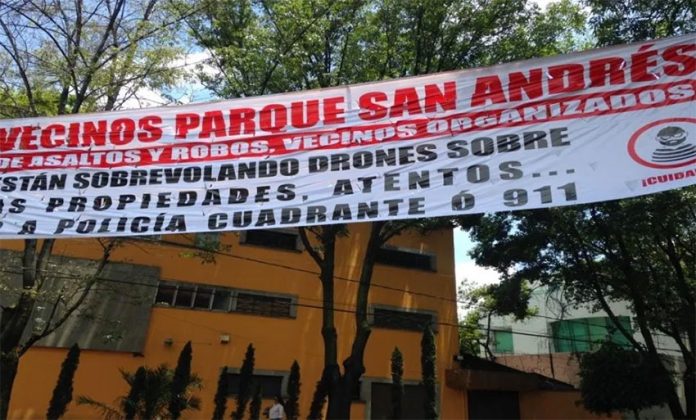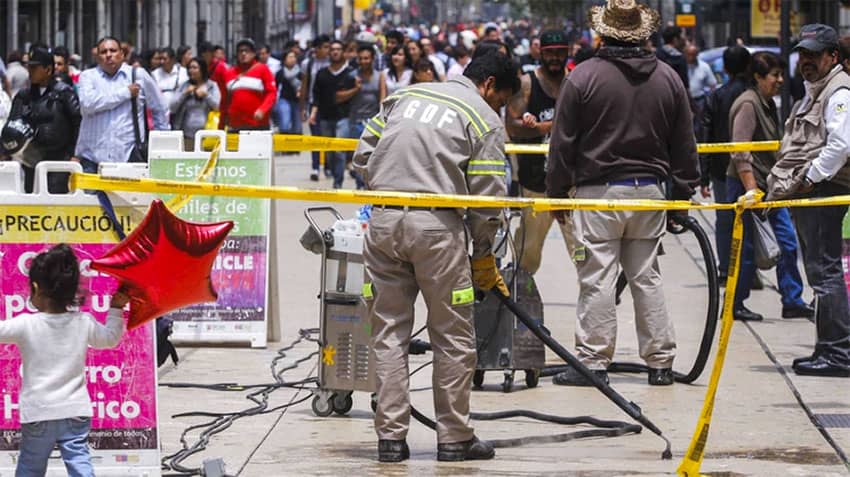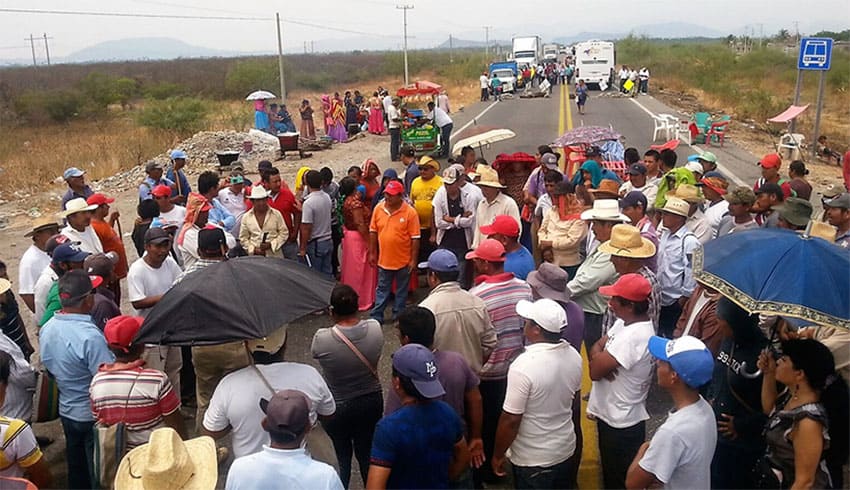The attackers who killed three women and six children near the Sonora-Chihuahua border on Monday didn’t mistake their victims for members of a rival gang, say family members, but federal authorities say evidence shows otherwise.
Security Secretary Alfonso Durazo said on Tuesday that the three SUVs in which members of the LeBarón family were traveling may have been mistaken by a criminal organization for those of a rival gang. A splinter cell of the Sinaloa Cartel known as Los Salazar is known to operate in the area as is La Línea, which has links to the Juárez Cartel.
Today, a senior military official suggested a cell of the latter was sent to the area where members of the LeBarón family were killed after a confrontation Monday in Agua Prieta between the two gangs.
La Línea, said Brigadier General Homero Mendoza Ruiz, was reacting to a possible incursion into its territory by members of Los Salazar.
But members of the LeBarón family, part of a breakaway fundamentalist Mormon community that has lived in Mexico for decades, rejected the hypothesis.

“All the conclusions that we’ve reached is that it was something that was almost premeditated against the community,” Adrián LeBarón, father of victim Rhonita Maria Miller, told the newspaper Milenio.
“They knew that they were killing women and children. There are kids who say they saw when their aunt got out of the vehicle and raised her hands. They saw when she was killed, where’s the confusion?” he said, responding to Durazo’s claim that there was confusion on the part of the criminal gangs involved.
The attack occurred on Monday shortly after the three vehicles left La Mora, a small Mormon community in the mountains of Sonora.
According to a Facebook post by LeBarón family cousin Kendra Lee Miller, two mothers and their children were traveling to Chihuahua to visit family while a third woman was on her way to pick up her husband from the airport in Phoenix, Arizona. A total of 14 children were traveling in the three vehicles.
The vehicle in which 30-year-old Rhonita Miller and four of her seven children were traveling “was found full of bullet holes and completely ablaze,” Kendra Miller said.
All five were “burned to mostly ashes” with “only a few charred bones left to identify” the victims, she said.
When two of the vehicles traveling farther ahead on the remote dirt road were fired upon, Miller said that 31-year-old Christina Marie Langford Johnson “jumped out waving her arms to let the attackers know that it was women and children in the vehicles.”
However, she was still shot and killed. “She gave her life to try and save the rest,” Miller wrote. Her seven-month-old baby girl was uninjured in the attack.
Dawna Ray Langford, who was traveling with nine children, was also killed along with two of her sons, aged 2 and 11.
Another of her sons, 13-year-old Devin Blake Langford, hid his six surviving brothers and sisters – five of whom had been wounded – in bushes and “covered them with branches to keep them safe while he went for help,” Miller said.
He arrived at La Mora at 5:30pm, six hours after the ambush occurred, and raised the alarm.
Julián LeBarón said in an interview that the boy was shot at on his way back to the family ranch but he avoided injury. Men at the ranch armed themselves and set off to get the surviving children.
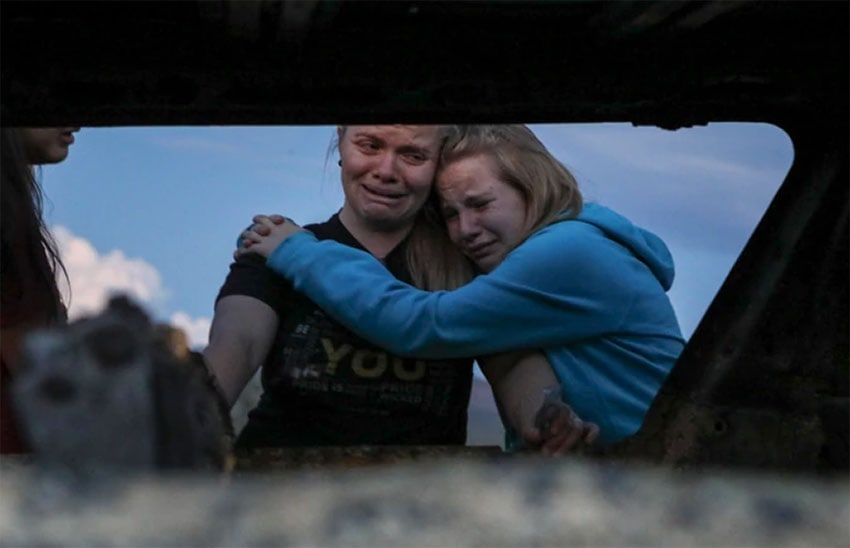
As help was taking a long time to arrive, 9-year-old Mckenzie Rayne Langford, who had sustained a bullet graze to her arm, also set out to seek assistance.
According to Miller, the men found the hidden children and the seven-month-old baby, who remained in her baby seat in a bullet-riddled vehicle. The baby seat appeared to have been hurriedly placed on the floor of the vehicle by her mother for protection, she said.
Adrián LeBarón told Milenio there were three bullet holes in the seat but the baby had somehow avoided injury. “What happened was a miracle,” he said.
The wounded children, among whom was a nine-month-old baby boy who had been shot in the chest, were initially treated at a local hospital before they were transferred by helicopter to a hospital in Arizona. The baby was said to be in a serious condition while 8-year-old Cody Langford required surgery on his wounded jaw.
After the children were found, a search was launched for Mckenzie Langford. Soldiers and men from La Mora searched in the dark for two hours until she was found at 9:30pm, Miller said.
“She walked for five hours,” said Lenzo Widmar, a cousin of Rhonita Miller.
“When we found her she was barefoot, she had blisters, a wound on her arm and was dehydrated. When she realized that it was us, the first thing she said was, ‘We have to go back for the others,” he said.
“She was in shock and we even had to fight with her a little to convince her that we already had the others. She wanted to return to the place where she left the wounded,” Widmar added.
“We want the culprits [to be caught], we want to know who they were, we want justice . . . We don’t want to live with this uncertainty. We’re a family of more than 5,000 members in our communities and our roots are very deep here in Mexico. We’re not thinking about leaving [but] we don’t want to be targets of organized crime,” he said.
Julian LeBarón, who has been outspoken in his condemnation of organized crime, told Milenio that “something very evil” happened on Monday, adding: “We’re unable to explain how armed men could kill women and children with so much cruelty.”
He said that Christina Langford shouted, “we’re women!” to the attackers before she was shot at close range.
LeBarón said he received a call early Tuesday morning from Security Secretary Durazo who informed him that three suspects had been arrested.

Still, he said that he was willing to accept assistance from the United States to investigate the attack and combat Mexico’s notorious drug cartels.
President Donald Trump said on Twitter on Tuesday that the United States “stands ready, willing and able” to help Mexico defeat the cartel “monsters.”
“. . . The cartels have become so large and powerful that you sometimes need an army to defeat an army!” he wrote.
“This is the time for Mexico, with the help of the United States, to wage WAR on the drug cartels and wipe them off the face of the Earth. We merely await a call from your great new president!”
President López Obrador ruled out the possibility that Mexico would accept assistance from the United States but Julian LeBarón said that “if Donald Trump offers to help us uncover the truth, to find the culprits and bring them to justice, or if aliens come from Jupiter to offer us that clarity, we’ll accept it.”
Lenzo Widmar took a different view, stating “I want to think that Mexico can solve its own problems, I want to think that we don’t need a foreign government.”
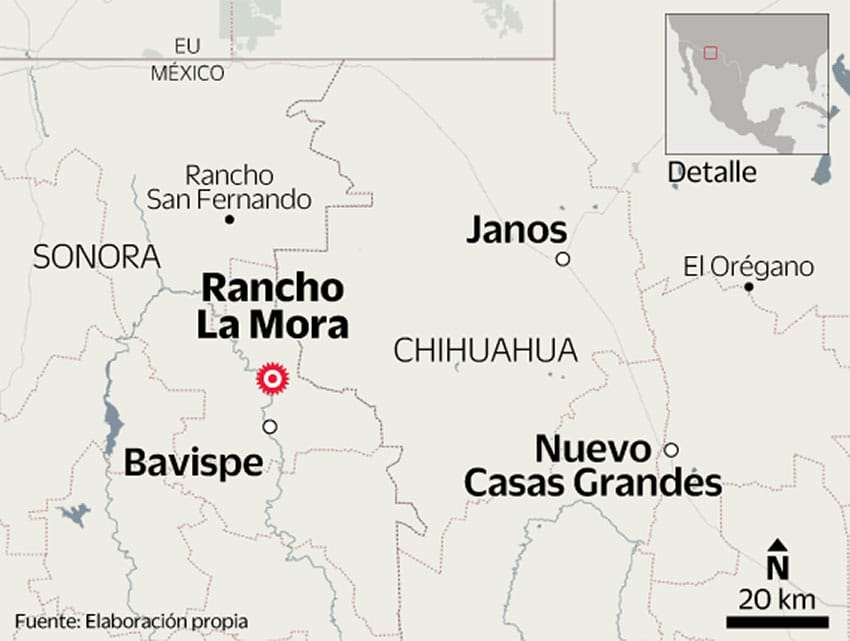
State and federal security forces have bolstered their presence in the area where the attack occurred and Foreign Secretary Marcelo Ebrard attended the scene of the crime on Tuesday.
Although the attack appears to have been directly targeted at the Mormon community, Adrián LeBarón said they won’t abandon their homes.
“Nobody is running away from here. If they think that because of what they did we’re going to run away, they’re wrong.”
Source: Milenio (sp), El Universal (sp)

